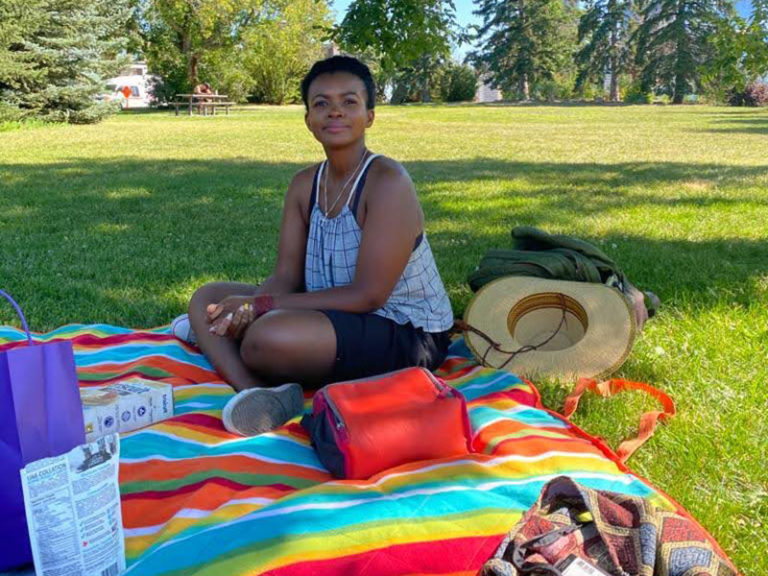Coming out on the other side of a pandemic
Stephanie Solomon looks at the effects of COVID-19 on arts organizations
In 2022, we asked our Operating Grant clients five COVID questions to give us some understanding of what possible challenges the community might be facing coming out of COVID times (I do have to mention, however, that we do not intend to release a full report on this as it was purely informative).
My work in this project was to group comments by question and see if there were any common themes within each comment grouping. I used a software called NVivo to group similar words together, look at word counts, and from there, read each comment for its content. Here is some more specific information about COVID impact.
1. In 2021 have you taken any of these actions as a result of prolonged COVID-19 restrictions?
- Online programming: These comments talked about either moving content online, or its future integration into content planning. Yet, there was thoughtfulness surrounding the movement to online content, and how it could negatively affect those with limited internet access. Interestingly, the integration of online content has created new partnership opportunities for some organizations.
- Artist accommodation made by various organizations:
- Ensuring their safety by encouraging working from home.
- Having online courses for professional development.
- Having flexible deadlines.
- Acknowledging artists’ mental health needs.
- Either helping international artists present remotely, or helping them navigate international travel/quarantine requirements.
- Artists worked alone in studios for safety.
- Paid more artist fees.
2. What are the most important potential forms of support in response to COVID-19 disruptions to your organization?
- Finances: At the time of our reporting in 2022, organizations still needed financial support. Some had accessed federal supports, but overall, there was a need for financial aid. This funding would go towards operations (paying staff and artists, rent, digital infrastructure upgrades/literacy) and programming.
- Health: There is increased awareness of a need for mental health supports and subsidized health insurance for artists and arts workers.
3. What challenges do you anticipate when reopening if you have not already reopened?
- Live Performance: Organizations talked about the slow return to live performance as a result of the pandemic. They also mentioned how this has affected the morale of performers. Not being able to perform had also affected their prospects in rescheduling. Finding alternative dates had been hard on both the artists scheduled, and the ability to reschedule. There is also a risk to getting COVID while preforming, necessitating the need for hiring understudies. Consequently, arts workers in some fields had moved on to other areas of the sector, leaving talent gaps. Audiences have also been hard to recover after COVID.
4. Were you able to reschedule any activities in 2021 that had been postponed or canceled in 2020?
- Yes: The events that were rescheduled were online, pre-recorded and presented online, or turned into films. A smaller portion were moved outdoors. However, moving an event outside comes with its own expenses. Things like restrictions and viewer burn-out meant that even if events went ahead, they had smaller crowds. The organizations that were still able to program had to cancel many shows, greatly reducing their volume of activity.
- No: These events were collaborations with other organizations, or artists, making rescheduling difficult. Some of these organizations’ programs were dependent on having live audiences or in person participation (like a dance class); the unpredictability of COVID waves made it hard, or impossible to reschedule these events.
- Changing programming completely: Some organizations had decided to scrap their 2020 season for completely different programming, that could work within the restrictions of 2021. Further, some of the events from 2020 had been postponed into the 2022 season, rather than being planned for the 2021 season, because of COVID.
5. If you have not already resumed full artistic activities, when do you anticipate being able to resume full artistic programming operations?
- 2022: COIVD restrictions and the Omicon wave still influenced an organization’s ability to program at the beginning of that year. This pushed many January start dates into spring/summer, and others into fall. Health restrictions have also impacted organizations’ ability to offer in-school programming, as schools in 2022 were still hesitant to host in the fall. Online offerings were still part of the landscape to ensure that audiences could be reached safely; and that events could go forward if restrictions were introduced again. However, organizations were looking towards live unrestricted performances.
- 2023 and beyond: The responses for 2023 discuss health restrictions, strategic planning and limited capacity. In these responses, there are hopes that by 2023, all health restrictions would be lifted, making full operations more feasible. Others mention the importance of having a strategic plan in place before reopening and this would most likely take place by 2023. Staffing levels/capacity is still a lingering issue, and the hope is that by 2023 organizations would have the number of appropriate staff to open. It also has to be noted that some organizations define reopening at full capacity as comparison to 2019 levels of activity; they see 2023 as being the year that they reach those levels.
Stephanie Solomon (she/her/hers) has a masters in development practice (MDP) from Waterloo, and a BA in sociology from the University of Calgary. She joined Calgary Arts Development as the research and policy coordinator in March 2020, and currently holds the title research and policy specialist. Before this she previously worked in Alberta Health Services.
Her interest is in how research, community development, and innovation intersect to create change. She sees herself as more of a creative dabbler and enjoys food, music, singing, drawing, and innovation.


